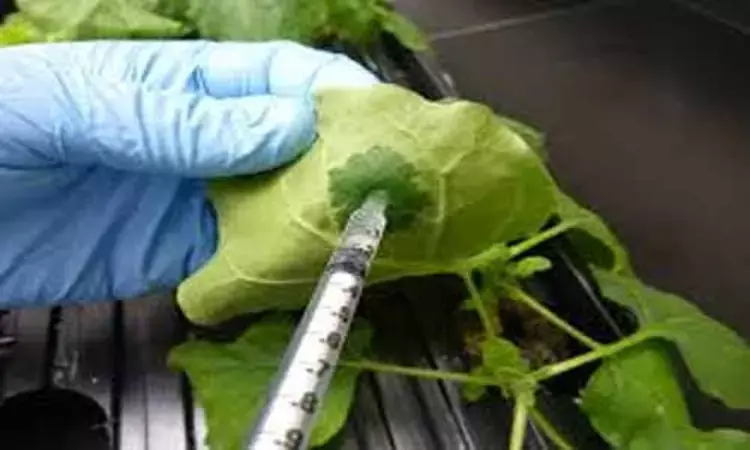- Home
- Medical news & Guidelines
- Anesthesiology
- Cardiology and CTVS
- Critical Care
- Dentistry
- Dermatology
- Diabetes and Endocrinology
- ENT
- Gastroenterology
- Medicine
- Nephrology
- Neurology
- Obstretics-Gynaecology
- Oncology
- Ophthalmology
- Orthopaedics
- Pediatrics-Neonatology
- Psychiatry
- Pulmonology
- Radiology
- Surgery
- Urology
- Laboratory Medicine
- Diet
- Nursing
- Paramedical
- Physiotherapy
- Health news
- Fact Check
- Bone Health Fact Check
- Brain Health Fact Check
- Cancer Related Fact Check
- Child Care Fact Check
- Dental and oral health fact check
- Diabetes and metabolic health fact check
- Diet and Nutrition Fact Check
- Eye and ENT Care Fact Check
- Fitness fact check
- Gut health fact check
- Heart health fact check
- Kidney health fact check
- Medical education fact check
- Men's health fact check
- Respiratory fact check
- Skin and hair care fact check
- Vaccine and Immunization fact check
- Women's health fact check
- AYUSH
- State News
- Andaman and Nicobar Islands
- Andhra Pradesh
- Arunachal Pradesh
- Assam
- Bihar
- Chandigarh
- Chattisgarh
- Dadra and Nagar Haveli
- Daman and Diu
- Delhi
- Goa
- Gujarat
- Haryana
- Himachal Pradesh
- Jammu & Kashmir
- Jharkhand
- Karnataka
- Kerala
- Ladakh
- Lakshadweep
- Madhya Pradesh
- Maharashtra
- Manipur
- Meghalaya
- Mizoram
- Nagaland
- Odisha
- Puducherry
- Punjab
- Rajasthan
- Sikkim
- Tamil Nadu
- Telangana
- Tripura
- Uttar Pradesh
- Uttrakhand
- West Bengal
- Medical Education
- Industry
Scientists develop effective, safer and less costly polio vaccine

Bethesda, Md. – As the world nears poliovirus eradication, the vaccines themselves have become the greatest threat. In response to global demand for an effective, safer-to-handle and less costly polio vaccine.
Scientists at the Uniformed Services University (USU) have developed a new Polio vaccine one that could help secure a polio-free world. The promising results of research, "A Novel Gamma Radiation-Inactivated Sabin-Based Polio Vaccine," have been published in PLOS ONE.
In developing countries, the live Sabin oral polio vaccine (OPV) has generally been used because it has been more cost-effective than the injectable, inactivated polio vaccine (IPV). Now, both OPV and IPV are becoming tricky because children vaccinated with OPV can shed paralysis-causing mutant polioviruses, and because the manufacture of IPV uses deadly, "wild" viruses that are a biosecurity threat. Therefore, in a call to action, the World Health Organization (WHO) has urged the scientific research community to develop safer polio vaccines, ideally based on the use of inactivated "killed" Sabin viruses since they are much safer to handle than the "wild" viruses used in IPV production. The researchers believe this could lead to the production of a safer, less costly injectable polio vaccine.
In response to the WHO request, researchers from USU and BMI, Inc., led by Dr. Michael J. Daly, professor of Pathology at USU, and Dr. Gregory J. Tobin, president of BMI, Inc., applied a synthetic Deinococcus manganese-antioxidant, developed by Daly and his USU team, to the Sabin virus. Then they exposed the Sabin virus to large doses of gamma radiation. The Mn-antioxidant, in turn, preserved the virus protein "shell," making the killed Sabin virus vaccine highly protective against polioviruses when injected into animals.
"We have also successfully applied this radiation vaccine approach against alphaviruses, like chikungunya virus and Venezuelan equine encephalitis virus, as well as deadly bacteria like the 'superbug' MRSA, for which there are still no licensed vaccines, " Daly said.
"Equally important to WHO goals is the cost associated with vaccine production," Tobin emphasized. "The gamma radiation-killed Sabin vaccine is prepared in just hours, whereas killing polioviruses with formaldehyde takes weeks and doesn't work well on Sabin viruses."
This project was supported by a Defense Threat Reduction Agency (DTRA) grant and National Institutes of Health (NIH) grant to Dr. Tobin. The team included Drs. Chumakov and Kouiavskaia at the Food and Drug Administration (FDA), and Dr. Meeks at DTRA.
For more details click on the link: https://doi.org/10.1371/journal.pone.0228006
Hina Zahid Joined Medical Dialogue in 2017 with a passion to work as a Reporter. She coordinates with various national and international journals and association and covers all the stories related to Medical guidelines, Medical Journals, rare medical surgeries as well as all the updates in the medical field. Email: editorial@medicaldialogues.in. Contact no. 011-43720751
Dr Kamal Kant Kohli-MBBS, DTCD- a chest specialist with more than 30 years of practice and a flair for writing clinical articles, Dr Kamal Kant Kohli joined Medical Dialogues as a Chief Editor of Medical News. Besides writing articles, as an editor, he proofreads and verifies all the medical content published on Medical Dialogues including those coming from journals, studies,medical conferences,guidelines etc. Email: drkohli@medicaldialogues.in. Contact no. 011-43720751


